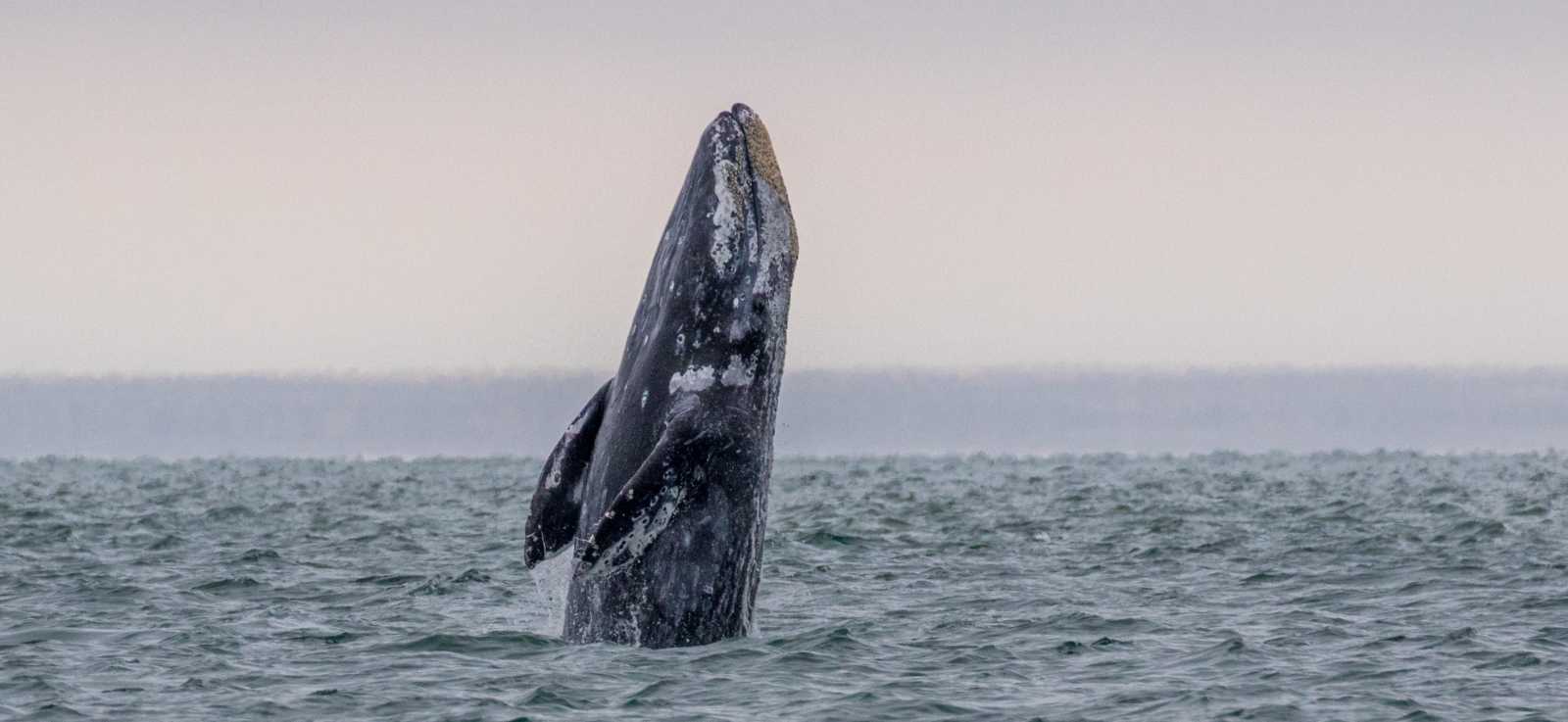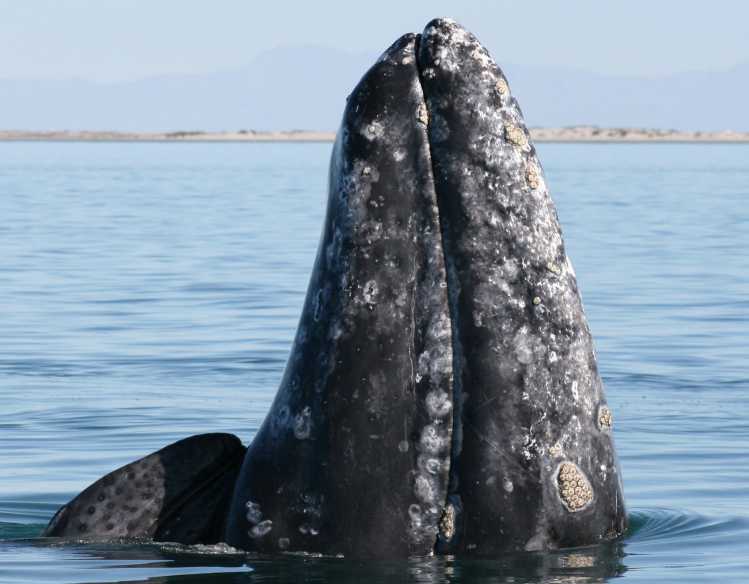
Gray Whale
Eschrichtius robustus
Learn More About Gray Whales
Gray whales are named for the distinctive gray and white patterning, which is unique to each individual. Their white patches are mostly made up of barnacles and lice that have attached themselves to the whale’s body. In fact, gray whales can carry over 400 pounds of barnacles and whale lice.
Female gray whales are usually larger than males, reaching up to 49 feet in length and 80,000 pounds.
With no dorsal fin, gray whales instead have a low hump and a series of six to 12 knuckles or bumps. They also have sparse hairs around their snout, especially young whales. Their spouts are usually low and puffy or heart-shaped.
Gray whales are baleen whales, with approximately 300 plates of cream-colored baleen hanging from their upper jaws. Two to five throat creases allow their throats to expand during feeding.
What do they sound like?
The greatest threats to marine mammals are caused by people, but we can also be their greatest champions.
Sign up for email from The Marine Mammal Center to stay updated on how you can be an advocate and champion for marine mammals like gray whales.
Habitat & Population Status
There are two stocks of gray whales—the Eastern population, which is found along the coasts of the United States and Canada, and the Western population, which is found along the coasts of Russia and Japan.
The Eastern stock of gray whales spends their summers north of Alaska in the Bering and Chukchi Seas and migrates south to the waters of Baja California, Mexico, for the winter. As a species that generally stays around the continental shelf, gray whales are a truly coastal species.
In the late 1800s, humans discovered gray whale breeding grounds, killing a large percentage of the population. This massive drop in numbers made it no longer profitable to hunt gray whales, and their population slowly recovered.
However, the early 1900s brought the invention of factory ships, which processed whales aboard the vessels. This new technology allowed intensive hunting on gray whales once again. Their population decreased dramatically to approximately fewer than 2,000 individuals.
Protection finally came in 1946 through an international agreement to stop hunting gray whales. In 1994, recovery efforts resulted in eastern North Pacific gray whales becoming one of only two species to ever be removed from the Endangered Species List. And in 2016, the population was estimated to be nearly 27,000, similar to what it was before modern-day whaling.
In 2019, gray whales began washing up along the west coast of North America in high numbers, leading the National Oceanic and Atmospheric Administration (NOAA) to declare an Unusual Mortality Event (UME) for this group.
NOAA estimated gray whales lost more than 40 percent of their overall population during the mortality event. The Center and partners responded to the largest number of dead gray whales, providing vital data. Malnutrition and changing ocean conditions that impacted food sources were found to be the main reasons why the population declined so dramatically.
The UME closed in 2023, and initial population estimates suggested that their numbers had begun to rebound. However, as of 2025 the gray whale population is declining for many potential reasons, with one being that fewer migrating gray whale calves have been seen off the West Coast. Currently, it’s estimated there are only about 13,000 eastern North Pacific gray whales, the lowest recorded population count since the 1970s.
Unfortunately, the Western stock is on the brink of extinction with only 100 to 150 individuals left today. Another group of gray whales once lived in the North Atlantic Ocean but became extinct in the 17th century due to hunting.

Breeding & Behavior
Gray whales have one of the longest annual migrations of any mammal. During summer they live in Arctic regions that are rich in their food. As baleen whales, gray whales eat through filter-feeding by opening their mouth to take in water then pushing the water back out through their baleen while their food remains in their mouth.
Muddy patches of water are often seen in places where gray whales are feeding. Although they feed primarily in the Arctic, some have been observed feeding during their migration as well.
As fall approaches, there is less sunlight and less food, and the water turns cold in the Arctic. This is when the whales travel to Baja California, Mexico, where they enter warm lagoons to mate and give birth.
Female gray whales sexually mature at around 8 years old, and usually give birth every two to three years, with their pregnancies lasting about one year. Newborn calves are typically born in January and February, averaging about 14 to 16 feet in length and weighing about 2,000 pounds. Calves stay with their mothers for about eight months and even migrate with their mothers back to the Arctic feeding grounds.
Gray whales can be seen passing by California in December and January during their southern migration, and again between March and May on their journey north.
Since gray whales migrate relatively close to shore, whale watching is very popular. People have many opportunities to see gray whales from coastal cliffs and headlands or from whale-watching boats.
Learn more about how to see the gray whale migration along the California coast, including tips for sighting gray whales and where to see whales from shore.


















